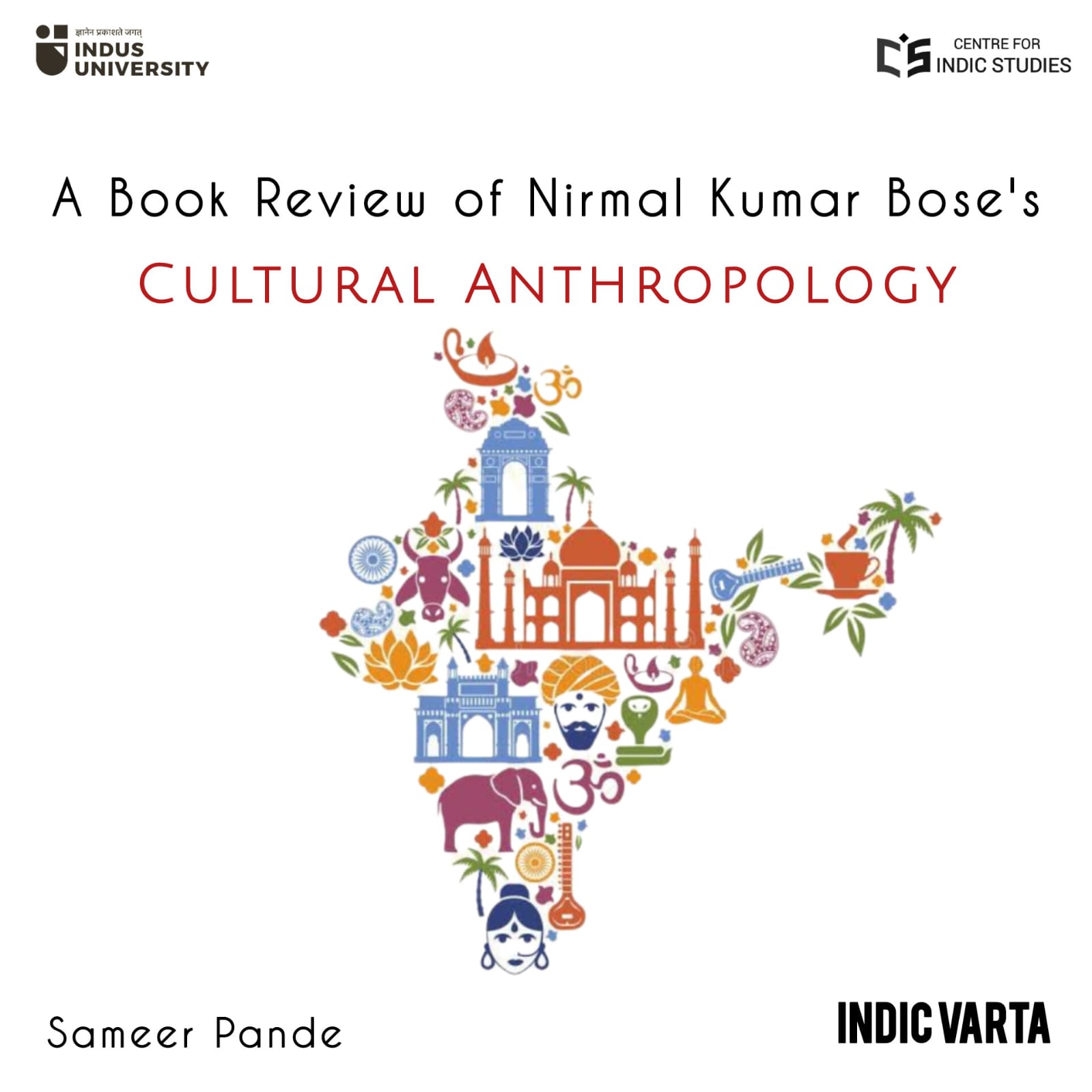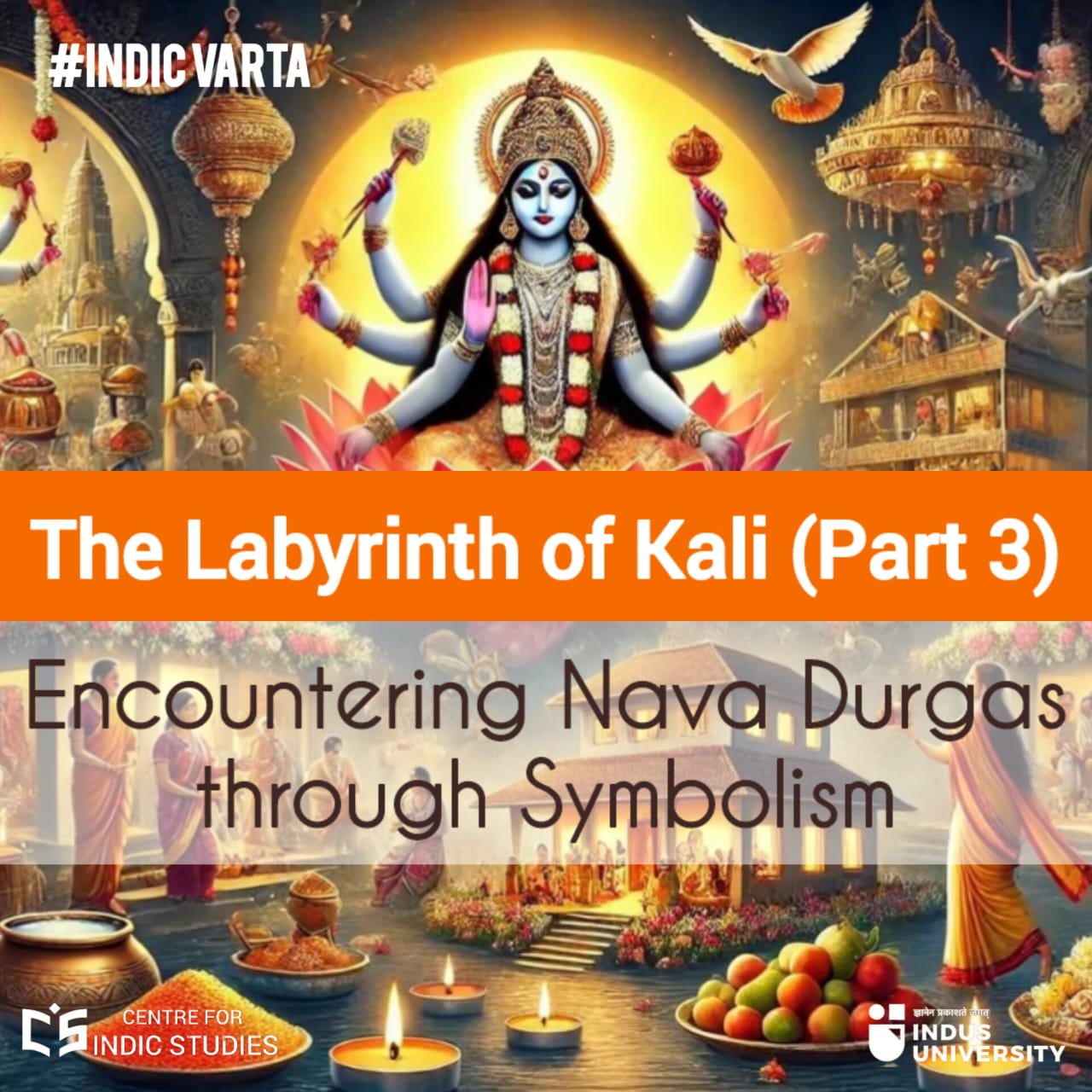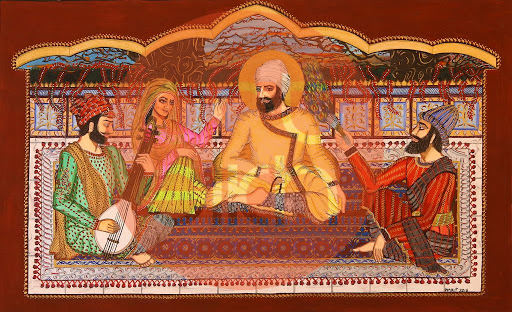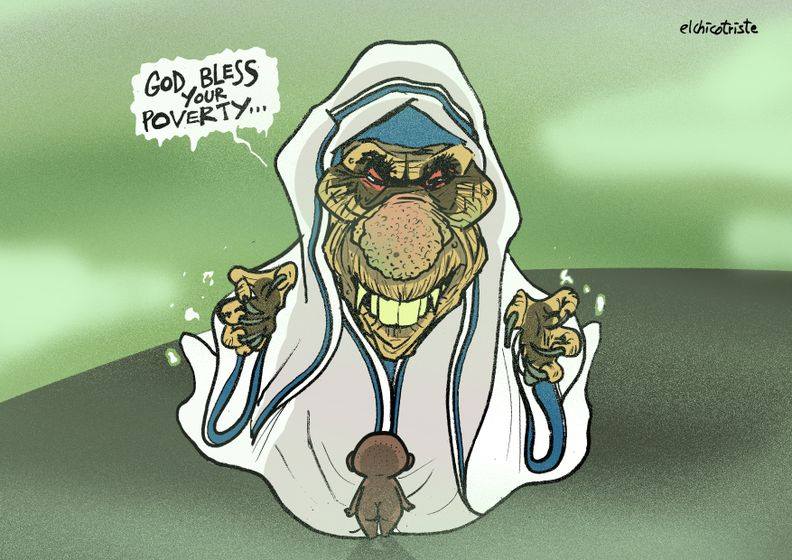- Visitor:121
- Published on: 2025-05-17 06:14 pm
A Book Review of Nirmal Kumar Bose's Cultural Anthropology (Part I)
Unlike the West, which initially confined anthropology to the study of physical traits and anatomical differences, Bose expanded the discipline into the realm of institutional behavior and historical psychology. He critiques how Western anthropology, despite its scientific pretensions, has been burdened by its own prejudices, racial hierarchies, colonial biases, and an obsession with categorizing civilizations into stages of “progress” or “backwardness.” The West sought a single trajectory for all human societies, but Bose asks: Is there one universal path, or do civilizations evolve in multiple, organic ways? He points out that if Western anthropology had not been weighed down by its own dogmas, it would have recognized that human culture is far too complex to be forced into rigid evolutionary models.

Nirmal Kumar Bose’s Cultural Anthropology (1961) emerged at a time when the study of humanities, especially Anthropology, was largely confined within Western frameworks, which even today is shaped by colonial assumptions and materialist determinism. As an eminent anthropologist and close associate of Mahatma Gandhi, Bose sought to reclaim anthropology from these Eurocentric confines, weaving it into the fabric of Indic thought. His work elevates the discourse beyond mere biological evolution, anchoring it in the deeper currents of Atman, Samskaras, and Dharma. Through a comparative lens, he juxtaposes Indian and Western anthropological traditions, revealing the distinct, organic rhythms of Bharat’s cultural evolution. In his meticulous exploration of caste, civilizational continuity, and ethical progress, Bose offers not just an academic treatise, but a vision, an anthropology that breathes with the cyclical pulse of Indian civilization, resisting the linear determinism of the West.
Bose has beautifully and logically begun with the first chapter, “Anthropology and its Aims”, where he raises a fundamental question— what truly separates humans from animals? Is it mere biological instinct, or is there a deeper force shaping human evolution? The theory of evolution offers profound insights into human behavior, shedding light on how biological, psychological, and social traits have developed over time. It has explained not just physical adaptations but also cognitive and behavioral tendencies such as cooperation, aggression, survival instincts, and even the formation of complex societies. Evolutionary theory has been instrumental in understanding why certain traits persist, how humans respond to environmental pressures, and how cultural practices often have deep-rooted biological underpinnings. Yet, the West, despite its contributions to evolutionary science, has been reluctant to extend its application beyond the physical domain which reflects in Western anthropology which has often reduced human progress to biological competition, the survival of the fittest applied to civilizations, cultures, and even moral development. This rigid framework overlooks the interplay of consciousness, culture, and ethical evolution.
India, on the other hand, did not reject the essence of evolutionary thought, it integrated it within a broader philosophical framework. Indic thought has long engaged with the idea of progressive change and expanded the conversation, evolution was not just physical but also spiritual. The concept of Atman, Samskaras, and Karma introduced the idea that human existence is shaped not just by external survival mechanisms but by an inner journey of consciousness. Bose, in this regard, does not dismiss evolution but seeks to refine it, arguing that human behavior is a product of both biological and karmic conditioning, that culture is not merely an extension of material necessity but a manifestation of deeper existential forces.
Unlike the West, which initially confined anthropology to the study of physical traits and anatomical differences, Bose expanded the discipline into the realm of institutional behavior and historical psychology. He critiques how Western anthropology, despite its scientific pretensions, has been burdened by its own prejudices, racial hierarchies, colonial biases, and an obsession with categorizing civilizations into stages of “progress” or “backwardness.” The West sought a single trajectory for all human societies, but Bose asks: Is there one universal path, or do civilizations evolve in multiple, organic ways? He points out that if Western anthropology had not been weighed down by its own dogmas, it would have recognized that human culture is far too complex to be forced into rigid evolutionary models.
And what about the individual caught in this vast network of social evolution? Bose makes a profound observation: “The behaviour of the solitary man is so deeply conditioned by his social environment that he follows the approved pattern of conduct even when this may bring about a crisis in his personal life” (p. 6). Human behavior, he argues, is not just a personal, biological impulse- it is dictated by the collective memory of civilizations, by cultural norms that transcend the individual. And this continuity is what gives civilizations their endurance. If every generation had to rebuild its cultural methods from scratch, human society as we know it would collapse. As Bose puts it: “If every generation of men had to build up their own methods of dealing with every situation...which men now enjoy would have disappeared” (p. 6).
This brings Bose to the grand question of human and cultural evolution: Is cultural progress governed by any fixed general law, or is it an organic, ever-shifting process? The West has often searched for deterministic laws, seeking to reduce human civilization to predictable stages. But Bose suggests that cultural evolution, much like the individual’s journey, is shaped by the deep interplay of history, tradition, and Dharma. It cannot be bound by a rigid framework - it must be understood in its full spiritual and civilizational complexity.
In the second chapter titled “What is Culture?” Bose takes up an even larger inquiry: did civilization emerge from a single point and spread, or did multiple civilizations evolve independently? Is human culture a grand diffusion of ideas from a single source, or is it a series of parallel, organic developments shaped by geography, history, and the human spirit? The Western obsession with linear progression insists on a single origin, a single trajectory, but Bose challenges this, asking whether cultural evolution can be bound by such simplistic models. Can culture be reduced to material progress, or is it an intricate interplay of speech, myths, religion, governance, and war? The West, in its relentless materialism, has always placed civilization on the foundation of economic and technological achievements, but Bose introduces an Indic perspective— one that classifies culture through the framework of Artha, Kama, and Moksha. He dismantles the Western idea that civilization is merely an accumulation of wealth and scientific advancement, arguing instead that true cultural evolution is a balance of material prosperity, sensory fulfillment, and spiritual transcendence.
And what of the forces that drive civilization? Does man possess an innate instinct that compels him to build societies in a specific, universal pattern? Wissler suggests that there might be a culture-building instinct, a biological compulsion that drives humans to construct civilizations in similar patterns regardless of geography. Bose does not outrightly reject this idea but rather builds upon it, recognizing both its insights and its limitations. He acknowledges that there may be certain universal tendencies in human societies, patterns of settlement, social organization, and technological advancement that emerge across civilizations. However, he argues that reducing culture to an instinctive, evolutionary byproduct oversimplifies its complexity. Culture is not just a mechanical response to survival needs; it is shaped by history, memory, and the moral consciousness of a people. Bose thus moves beyond the Western framework—rather than discarding it, he expands it, integrating a deeper understanding of how civilization is molded not just by biology but by philosophical, ethical, and historical forces unique to each society.
The West, however, remains fixated on material traits. Under the idea of culture as adaptive behavior, it views self-preservation as the primary force shaping human society. But is survival alone enough to explain the vast richness of civilization? The instinct of self-preservation may explain why humans seek shelter, food, and security, but can it explain why they build temples, compose poetry, or seek truth? The West recognizes the instinct for recognition, the human desire to be acknowledged, to carve out an identity, but what it fails to acknowledge is that true culture emerges when man rises above these instincts, reaching for something beyond the material. As Bose poignantly observes: “The desire for knowledge or the demand for truth is not explicit in all human beings…The desire to know and be one with the universe is a sublimated form of sexual desire… The impulse for identification with the universe is occasionally so strong that it lifts certain persons above their subjugation to vital needs. The demands of the impulse often go against the demands of personal well-being, so that— so far as the individual is concerned— it has hardly any utility on the personal level” (p. 13). Here lies the difference, Western thought stops at instincts, but Indic thought recognizes that beyond material needs, beyond even identity, lies a greater longing: the urge to dissolve into the infinite, to merge with the cosmos. This, Bose argues, is what separates true culture from mere survival, it is not just about adaptation, but about transcendence.
In the same chapter, Bose now turns to a critical question, the unity of culture. If civilizations evolved independently, does that mean cultures exist in isolation, fragmented like scattered pieces of a puzzle? Or is there an underlying interconnectedness that binds them all? The Western approach often attempts to break culture down into independent segments, treating each society as a self-contained unit. But Bose rejects this reductionism, arguing that culture cannot be neatly compartmentalized. As he states, “This doesn’t mean that culture can really be cut up into independent fragments which have no relation with one another”. Culture, he asserts, is not a mechanical assembly of parts— it is an organic whole.
And here lies Western analysis which tries to categorize culture like a building made of bricks and mortar, each piece separate from the other, as if human civilization can be deconstructed like an architect’s blueprint. But Bose further gives an approach, writing, “Instead of imagining that culture is like a building of bricks and mortar...we must think of it as a continuum, where elements pass through sieves of different meshes according to the claims of our intellectual interests. In nature, however, they are very intimately mingled with one another” (pg. 18). Culture is not an artificial structure— it is a living, breathing entity, where the economic, social, and spiritual aspects are inseparably woven together.
To bring clarity to this holistic view, Bose presents a suggested classification of culture, deeply rooted in Indic thought. While the West looks at culture primarily through economic and technological lenses, Bose offers an alternative framework - one that sees culture as a balance of Artha (material pursuits), Kama (desires and emotions), and Moksha (spiritual liberation). But he does not stop there. He expands this into three layers - Vastu (material aspects), Kriya Samhati (action and societal organization), and Tattwa (underlying philosophical principles) (pp. 19-20). These are not isolated categories, but interwoven dimensions of civilization. Bose further differentiates between Vishwamulaka (worldly aspects) and Vicharamulaka (philosophical aspects), emphasizing that culture is not just external activity, it is also shaped by contemplation, inquiry, and higher thought. But culture, Bose insists, cannot be reduced to mere economic explanations. It has an internal unity of its own, a wholeness that transcends the material. Civilization is not just about survival and organization; it is about meaning, purpose, and the eternal quest for truth.
Bose, with his sharp civilizational insight, moves into the third chapter, “The Soul of Culture”, where he lays bare the fundamental contrast between Indian and European worldviews. What drives a society - unrestrained acquisition or the balance of duty and communal harmony? The West, driven by capitalism and competition, built its anthropology on survival of the fittest, a concept Darwin introduced and Marx repurposed into economic struggle. This framework, rooted in individual gain and social disruption, sees civilization as a battleground. Bose, however, presents the Indian perspective, where the individual is part of a larger social order, bound by Dharma, cooperation, and shared responsibility. Here, Western anthropology’s obsession with hierarchy and power collapses, civilization is not just an economic struggle but the balance of Dharma and material needs.
This chapter also brings forth one of the most controversial subjects - caste. Was caste always a rigid, oppressive system, or did it evolve organically over time? Bose presents it in three stages. The first, the period of subjugation and assimilation, where caste, rather than being a tool of oppression, functioned as a mechanism for integrating different communities. However, this was a time when the Aryan Invasion Theory was still widely accepted, and Bose, despite his insights, had limited access to the evidence we have today that debunks this colonial narrative. This left him entangled in a goody-goody interpretation, woven by British and Islamic-Christian scholars to justify their civilizing mission.
The second stage links caste with economic arrangements— a phase where professions became structured within caste lines, ensuring economic stability and interdependence rather than rigid stratification. The third stage explores the social aspect of caste, drawing from the writings of Eggeling, Hutton, and Dr. Bhupendranath Datta. Eggeling and Hutton, like many colonial anthropologists, viewed caste through the lens of hierarchy and rigidity, while Datta, taking a more nationalist approach, saw caste as a dynamic, evolving institution. Bose departs from them, offering a perspective that sees caste as neither inherently oppressive nor static, but one that adapted to economic and historical shifts. Yet, despite his nuanced take, Bose falls short in addressing one crucial point, his lack of engagement with the growing body of evidence that dismantled the Aryan Invasion Theory. Had he had access to these works, his arguments would have been even more potent, stripping away the colonial baggage that still lingered in academic discussions of Indian society.
Bose does not hold back in his critique of capitalism, recognizing its destructive impact on India’s traditional village communities. As he writes, “Capitalism has gone a long way in breaking the ancient village communities. The interdependence of caste has become attenuated in the villages... so now there is consequently no longer any reason for Indians to be loyal to the caste system” (pg. 34). Here, he captures a brutal reality— caste, in its original form, was an interdependent system, but capitalism hollowed it out, leaving behind a distorted structure that no longer served its original purpose.
The best way to conclude this chapter is in Bose’s own words, words that resonate far beyond anthropology and into the realm of civilizational truth: “In either case— when there is logical discord between the outer framework of culture and the so-called ‘soul,’ change sets in and proceeds towards greater logical conformity between the two” (p. 36). Culture cannot exist in contradiction to its own essence. When the outer structure of a society no longer aligns with its deeper philosophy, transformation is inevitable. This is where civilizations either adapt or collapse.
With the fourth chapter, “Cultural Traits: Its Nature and Distribution”, Bose moves to the intricate mechanics of cultural evolution. Why do some traditions persist while others vanish? What makes a civilization absorb certain elements while resisting others? Is culture a static inheritance, or is it in a constant state of negotiation, adapting to the pressures of time and external influence? The West often sees cultural diffusion as a one-way process, where dominant civilizations impose their traits upon the weaker ones. But Bose dismantles this simplistic view, introducing the idea of trait-complexes, where cultural transmission is not an act of conquest, but a process of selective adaptation. Cultures do not simply borrow, they modify, assimilate, and transform.
This chapter is particularly technical, but Bose does not just leave it at abstract theorization, he grounds it in vivid examples. He speaks of rice as a defining trait of Bengal, deeply embedded in the region’s diet, economy, and even religious customs. A trait is a singular cultural element, but a trait-complex is an interconnected web; rice, for instance, is not just food; it shapes agrarian cycles, festive rituals, and even the aesthetic of poetry and folklore in Bengal. But continuity in culture is what truly fascinates Bose, and he illustrates this through the example of Holi. Festivals like Holi, which have persisted for centuries, are not just moments of celebration but markers of civilizational endurance. They evolve, incorporating new influences while retaining their core ethos. Bose also delves into the infrequency of inventions, a concept often overlooked. Innovations do not happen in a vacuum; they emerge in specific cultural contexts, often clustering around cultural centers. However, Bose warns that a cultural center is not necessarily a geographical location, it is a nucleus of intellectual and artistic activity, where traditions are refined and exported outward. Kashi, Nalanda, Takshashila, these were not merely places, but ideas, centers of knowledge whose influence spread across regions.
But what happens when a civilization is forcefully disrupted? Bose does not shy away from critiquing how colonial rule altered the natural trajectory of India’s cultural evolution. He points out that the most powerful instrument of fundamental change was the government established by the British in India. The British, knowing that direct rule was impossible without native collaborators, sought to create an ally on Indian soil (p. 47). The result? A class of Indians, educated in English, trained to administer the empire, but alienated from their own traditions. As Macaulay infamously put it, they were to be “Indian in blood and colour but English in tastes, in opinion, in morals and in intellect”. This was not just an administrative maneuver, it was a cultural coup. The British systematically engineered an intellectual rupture, severing educated Indians from their civilizational roots, turning them into intermediaries between the rulers and the ruled. From here, Bose transitions into the mechanics of diffusion and conduction, explaining how cultural exchange takes place. Diffusion is the spread of cultural elements across space, language, art, religious practices moving from one region to another. Conduction, however, is the process by which these elements are absorbed and re- interpreted within a new cultural framework. Take, for instance, the Ganda-Bherunda in Tamil Nadu, originally a two-headed mythical bird found in Karnataka, it was later adopted into Tamil iconography, its symbolism evolving while still retaining its original essence. Another striking example of composite cultural formation is the Spring Festival of Bengal, where local traditions merged with broader pan-Indian influences to create a unique regional identity. Bose also discusses attenuation, the process by which cultural traits either diminish in intensity (numerical attenuation) or undergo structural modification (structural attenuation). For instance, certain Vedic rituals once performed elaborately across villages have now been condensed into simpler puja ceremonies in urban homes. The core remains, but the form changes.
Finally, Bose explores the result of isolation in anthropological terms. When a culture or community is cut off from broader civilizational currents, it either fossilizes or develops in unusual directions. The Andamanese tribes, for example, remained largely unaffected by outside influences for centuries, preserving archaic cultural patterns. On the other hand, civilizations that maintain selective engagement, absorbing external elements without losing their essence, continue to evolve dynamically. This chapter, technical yet profoundly insightful, captures the essence of cultural continuity and change. Bose compels us to rethink cultural evolution—not as a rigid, linear process dictated by external forces, but as an organic, adaptive interplay where civilizations are both resilient and transformative.
Click here to read the next part of the review.
- 60 min read
- 1
- 0










